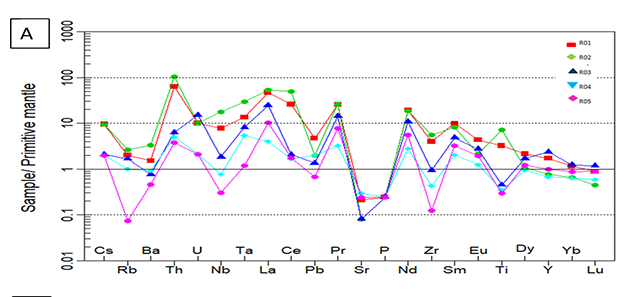


Indian Journal of Science and Technology
DOI: 10.17485/IJST/v13i40.1686
Year: 2020, Volume: 13, Issue: 40, Pages: 4244-4261
Original Article
V B Omotunde1∗, A S Olatunji2 , O A Ehinola3 , O A Afolabi4 , M O AbdusSalam1,5, O J Olajide-Kayode6
1 Researcher, Department of Geosciences, Pan African University Life and Earth Science Institute, University of Ibadan, Ibadan, Nigeria. Tel.: +234-8136137432
2 Associate professor, Department of Geology, University of Ibadan, Ibadan, Nigeria
3 Professor, Department of Geology, University of Ibadan, Ibadan, Nigeria
4 Lecturer, Department of Earth Sciences, Ladoke Akintola University of Technology, Ogbomosho, Nigeria
5 Lecturer, Department of Geology, The Polytechnic Ibadan, Ibadan, Nigeria
6 Lecturer, Department of Geology, Osun State University, Osogbo, Nigeria
∗ Corresponding author:
Tel: +234-8136137432
[email protected]
Received Date:16 August 2020, Accepted Date:22 October 2020, Published Date:20 November 2020
Background/Objectives: Talcose rocks within Precambrian Basement Complex serve as relics of Archean greenstones. alterations associated with polycyclic-orogenies that affected this complex is studied to understand mineralogical and geochemical alterations. Methods: Five fresh samples of talcose rocks were collected during field mapping. These samples were cut into thin sections to reveal modal mineralogy, altered minerals and degree of alteration of such minerals. Mineral phase identification of the talcose rocks was conducted using X-ray Broker D8 ADVANCE diffractometer while whole rock analysis was carried out using Inductively Coupled Plasma Mass Spectrometry. Findings: Lithological relationship revealed from field evidence showed that the talc bodies occurred in close association with micaceous schist. The mineral assemblage of talc, tremolite, actinolite, chlorite and calcite suggest low grade greenschist metamorphic facies from possible hydrothermal alteration. Geochemical results revealed the following range of concentrations; SiO2 42.19-59.03%; Al2O3 1.1 - 11.8%; Fe2O3 7.64-9.56%; MgO 24.47-26.639%; Ni 594-1207ppm; Co 43.2-113.9ppm; Sn 6-41ppm; V 32-75ppm and Zr 1.3-58.7ppm, and these are typical of talcose rocks. Petrogenetic studies suggest a komatiitic origin with a peridotitic komatiite precursor for the talc-chlorite-tremolite schist. Enrichment in LREE, depletion in HREE and a negative Eu anomaly suggest alteration of the parent magma for the talcose rock and plagioclase fractionation. The trends observed for the LILE, HFSE and REE suggest possible contamination or mixing of crustal and mantle materials during the formation of the protolith. Ni and Co concentrations are higher than average crustal values with implication for ultrabasic to basic magma composition for the komatiitic progenitor and also suggestive of possible mineralisation. Conclusion: Mineralogical examination has revealed a talc-chlorite-tremolite composition for the talcose rocks with peridotitic komatiite precursory while geochemical composition supported ultrabasic magmatism similar to those with the Ilesha schist belt.
Keywords: Ila Orangun-Oyan; Talcose rocks; Hydrothermal alteration; Peridotitic Komatiite; Ilesha schist belt
© 2020 Omotunde et al. This is an open-access article distributed under the terms of the Creative Commons Attribution License, which permits unrestricted use, distribution, and reproduction in any medium, provided the original author and source are credited. Published By Indian Society for Education and Environment (iSee).
Subscribe now for latest articles and news.